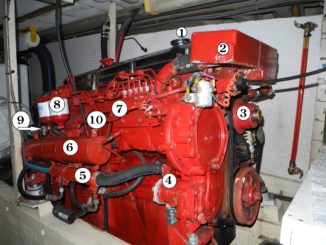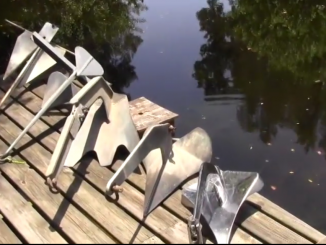
Spring brings so many boatyard discussions about which paint to use on your hull. But before you even lift your first brush….STOP! Don’t paint your Zinc!
What’s a Zinc?
A zinc is one type of anode that will reduce the effects of galvanic corrosion between two dissimilar metals. Huh? When metals like your stainless steel propeller shaft and the bronze propeller are exposed to electrical currents in the water the metals can start to corrode. Fortunately a sacrificial metal such as zinc, aluminum or magnesium will attract electrons first.
Zinc anodes are used mostly in salt water applications to reduce the corrosive effects between two dissimilar metals. In fresh water boating a different metal than zinc may be used, sometimes aluminum or magnesium.
Where Do You Find a Zinc/Anode?
The shaft zinc will usually be fitted to the boat’s shaft with a collar style design. Be sure the actual shaft metal is clean to make a good electrical conductive contact. There must be no dirt or paint between the two metals. And if you paint the shaft then keep a clean space ready to secure the zinc/anode and- DO NOT paint the zinc! The paint would reduce the effectiveness of the zinc through the water because the paint acts as a barrier or insulator.
Anywhere else?
What zincs/anodes do you have aboard your boat?
- Shaft
- rudder
- trim tabs
- swim platform braces
- stabilizer shafts
- thrusters
- Where else?
Consider the heat exchangers on your propulsion engines and generators. On these engines you will find a pencil zinc inside the heat exchanger. Click here for an article that details this type of zinc.
So, don’t paint your zincs or anodes! Learn more about zinc installations and how you, the boat owner, can check them to see if they need replacing. Ask Captain Chris this and so much more at our seminar Introduction to Boat Systems. Learn more here about when and where you can attend our next program.



